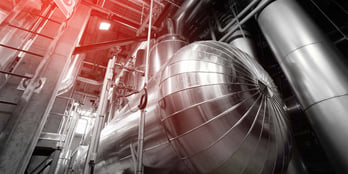
Mechanical Insulation
Mechanical insulation is engineered and designed to be applied to mechanical systems. Often confused with insulation designed for walls and ceilings, mechanical insulation is actually quite different. It helps a designed engineered system function at a specific operating temperature to ensure it operates efficiently. Incorrectly installed Insulation results in loss of operating expenses, wasted energy and unnecessary and harmful greenhouse gas emissions.
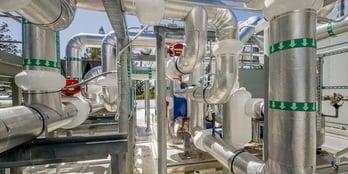
Maintenance / New Construction
Mechanical insulation should be installed in new construction buildings/projects and it can be retrofitted into existing buildings and facilities as well. It is imperative insulation is installed to the strict technical specification developed by engineers and inspected to ensure the insulation was installed within compliance. Mechanical insulation must be maintained and inspected to ensure its effectiveness to the operational of the systems.

Industrial High Temperature
Extremely high temperature insulations require special attention due to the severity of its operating thermal range. Any loss of heat can reduce the efficiency of the system's operation. Furthermore, heat generation is expensive, which makes energy efficiency paramount. New mechanical insulation technologies require the most highly trained workers to professionally install these products.
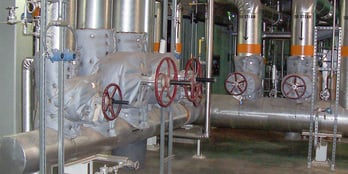
Pads and Blankets
Pads and blankets are quite popular with high temperature systems, where access to the equipment is available. It is typically used on flanged pipe or other equipment, which requires insulation or personal protection. Removable and reusable pads offer a cost-effective solution to frequently serviced high temperature equipment.
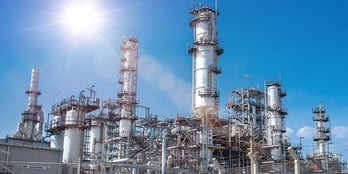
Storage Tanks and Vessels
Storage tanks and vessels may require insulation as well. There are a number of applications, which can be used such as traditional insulations or newer systems including vertical panels systems. Some contractors are highly proficient in these types of applications.

Boilers and Chillers
Both of these units operated at the extreme temperature range of mechanical insulation. Each has their particular concerns, which need to be addressed. For instance, a boiler has to be completely insulated to reduce the extreme heat loss, while a chiller or refrigeration system requires vapor retarders and barriers to reduce rust and bacteria-causing condensation.

Metal Cladding / Weather Barriers
The metal, usually aluminum, is designed to offer a strong weather barrier to protect the insulation from rain, snow, ultraviolet rays and physical abuse. Additionally, its metal jacketing offers an attractive appearance, with a silver-like aluminum, which can be painted to a desired color. Metal finish can be used indoors or outside.
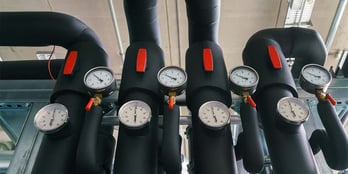
Commercial Heating and Cooling
There are miles of insulated piping in a typical building, which deliver hot water and recirculate hot water and cold, domestic water. This is probably the most common type of mechanical insulation most people encounter. Also, it is also quite common for some of this insulation to be missing, which increases the operating cost of the building.
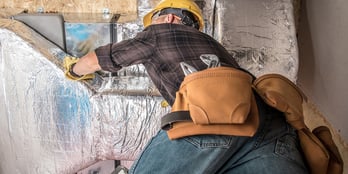
HVAC Systems
Heating, Ventilating and Air Condition (HVAC) systems are used to heat and cool a building. The building’s delivery system can be a labyrinth of ductwork, which supplies or returns the conditioned air to its desired location. Duct insulation must be properly installed and maintained correctly to ensure its vapor barrier capabilities. Otherwise, unfavorable conditions will develop due such as condensation, which could spread to large distances and potentially staining ceiling tiles and lead to bacteria growth.

Vapor Retarders and Barriers
This little-known aspect of mechanical insulation plays a large role in regard to insulation performance. Barriers and vapor retarders separate the hot insulation application from cool or cold application. For instance, if you have you noticed condensation forming on the outside of a cool beverage can? The same thing happens with pipes and equipment if the vapor barrier is compromised - it will condensate and develop rust, which in turn will limit the life of the system. Furthermore, if the insulation gets wet, it will not insulate and may lead to develop bacteria growth such as mold.
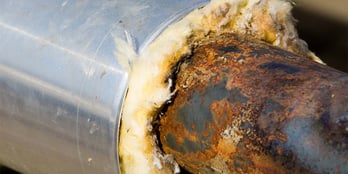
CUI Programs
Corrosion Under the Insulation or CUI is a type of administrative concern to address the lack of weather or vapor barriers. Many decision makers have realized it is cheaper to have insulation professionally installed or maintained with a vapor barrier then to replace the pipe or equipment.
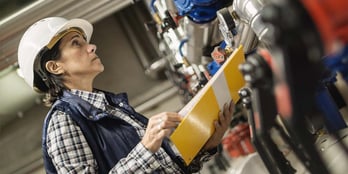
Mechanical Insulation Evaluations
Insulation should be inspected periodically and those performing the inspection should be highly trained to access any deficiencies within an insulation system. Further investigation could lead to an energy audit, which can calculate the amount of energy lost as a result of missing insulation and then turn the data into the amount of real dollars lost, energy wasted and greenhouse gas emissions. Thermal photography can also be used to show the deficiencies of any insulation system. These evaluations will demonstrate how properly installed or repaired mechanical insulations installations provide a return on investment or ROI, within six months to two years, regardless of the size of the project. The energy audit can then be used to help formulate a budget to address a facility’s insulation plan.

Asbestos Abatement
For 100 years, asbestos was used as insulation because it was a great insulator. Unfortunately, it was eventually determined to be a carcinogen. While asbestos has not been used since the late 1970s, it may still be found in buildings built before 1980. Asbestos is harmless unless it is disturbed. Untrained workers often unknowingly damage asbestos insulation for various reasons, not knowing the dangers hidden in the insulation. While mechanical insulation must be maintained, asbestos insulation must be removed in order to protect workers and others from the dangerous cancer-causing mineral. Contractors performing this work are strictly licensed, as the work is highly regulated and inspected for the safety of the people who live or work in the building.
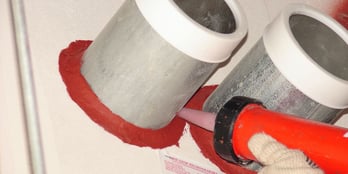
Firestop and Smokeseal
Buildings are constructed to have fire rated walls, which are designed to contain a fire if one breaks out in the facility. This is required by both fire and building codes. Unfortunately, fire rated walls can be compromised during construction, as penetrations may weaken the wall’s integrity and if a fire occurs, it may permit fire or smoke to penetrate through the wall. A specialized firestopping contractor identifies these “weaken” areas and installs special materials to regain the wall’s fire rated barrier. The true value of this specialized industry is often realized after a building’s fire, well after it is too late. This type of insulation has saved lives.
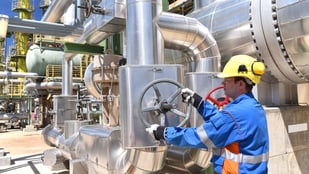
Nuclear Specialized Applications
Installing insulation inside a nuclear power plant is a highly specialized skill, as specific types of insulation and installation techniques are required. These materials and techniques differ when compared to normal mechanical applications due to the Nuclear Regulatory Commission (NRC) requirements. Contractors, who perform this type of work, have a qualified workforce specifically trained to work inside these plants.
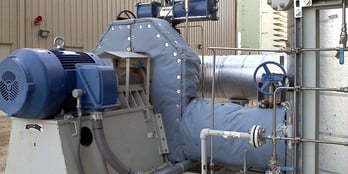
Specialized Insulations
Mechanical insulation is used in many areas with many different purposes, such as sound attenuation, which is a type of insulation used to reduce the transmission of sound. Insulation also plays an important role for the maritime industry, where it is installed on ships. Furthermore, besides asbestos abatement, our contractors perform lead and mold remediation to keep people safe and healthy.
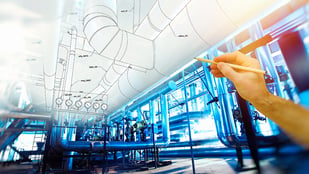
Highly Trained Workforce
The installation of mechanical insulation may appear simple, but it is not. It is rather complex, as there are many different types of insulation, each with different limitations and application processes. Union Mechanical Insulation contractors exclusively uses a union workforce instructed through an intense apprentice program, which is registered by the U.S. Department of Labor and the Canadian Provincial Government. These workers receive additional journeymen update training throughout their careers to keep them up-to-date on the latest technology, tools and industry information. This makes them the most highly trained insulation workforce in the world.

Safety Trained to Current Standards
Mechanical insulation union contractors and workers throughout the U.S. and Canada are trained in the latest safety technologies and training programs, often exceeding standard OSHA regulations.


















